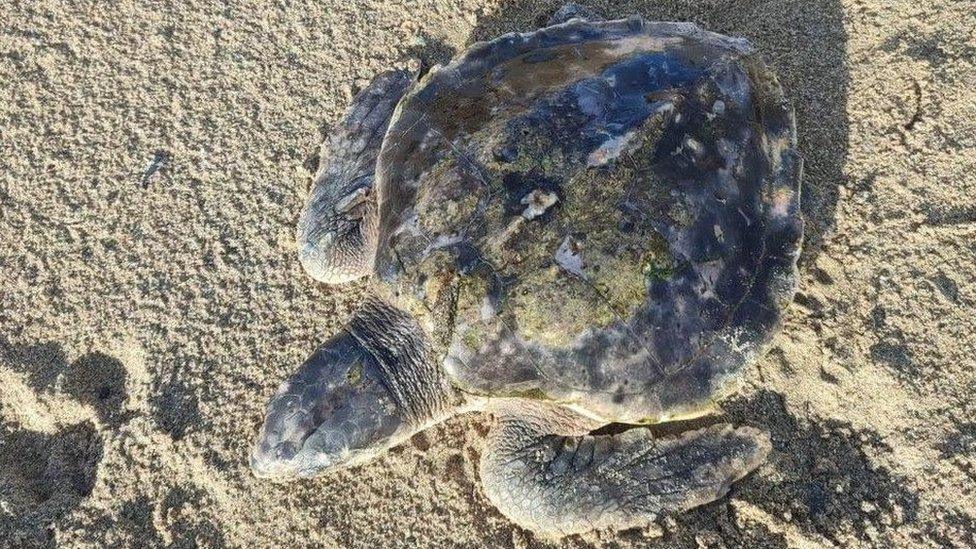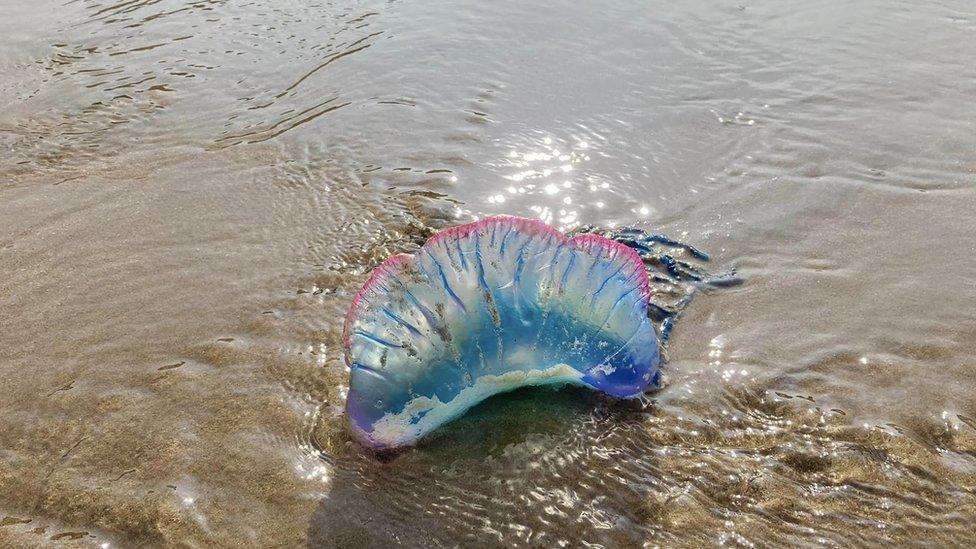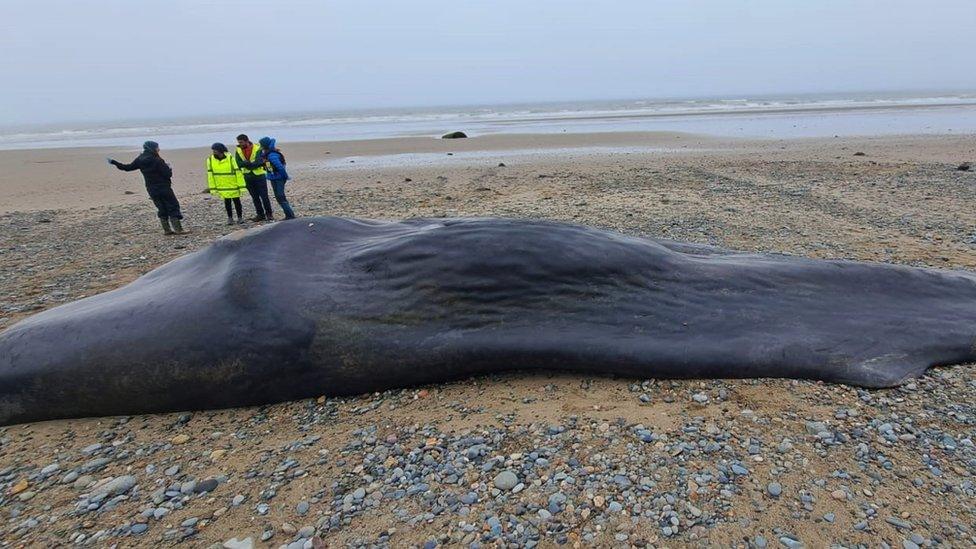Kemp's ridley turtle washed up in Wales makes recovery
- Published

After suffering significant physical damage Rhossi is on the mend
An extremely rare turtle which washed up on a Welsh beach is making a recovery, say zoo staff.
Rhossi the Kemp's ridley named Rhossiturtle was discovered on Anglesey last week - more than 4,000 miles from home.
Rhossi was found by dog on the sands of Rhosneigr beach.
The turtle was placed into the care of Anglesey Sea Zoo, making it the second Kemp's ridley to end up there since 2021.
Still too young to have its sex determined, it looked like touch-and-go for Rhossi for a while.
Cold and stranded turtles can die during the process of being revived, but it made it through the first week of critical care despite having suffered significant physical damage from its Atlantic crossing.
It is now moving on to the next stage of rehabilitation and treatment.
Turtle vet Celyn Marshall said: "We corrected its dehydration with fluid therapy, monitored blood glucose levels and slowly increased the temperature.
"We are now moving on to antibiotics and vitamin injections while awaiting signs of improving gut function and assessing for any less apparent injuries."
Mr Marshall, from Bennett Williams Veterinary practise in Gaerwen, added: "We've a long way to go, but Rhossi has been a little fighter from day one."

Staff at Anglesey Sea Zoo have nursed Rhossi back to health
The previous Kemp's ridley - a critically endangered species mainly found in the Gulf of Mexico - to end up on the north Wales shore was named Tally.
It appeared on Talacre beach, Flintshire, in 2021 and after a long rehabilitation was flown to Texas earlier this year to be released back into the warmer seas.
The zoo said there have been about 30 juvenile Kemp's ridley turtles washed up in the British Isles, but only five have been rehabilitated and re-released.
The species was reduced to just a few hundred nesting females at one site in Mexico in the 1980s, prompting conservation efforts including setting up a second site in Texas.
Despite these ongoing efforts there are still only around 8,000 breeding females in the world today.

WALES' HOME OF THE YEAR: Which home will be crowned the winner?
UNMISSABLE DRAMA: When the Wolf is at the door, be very afraid

- Published6 October 2023

- Published9 May 2023
